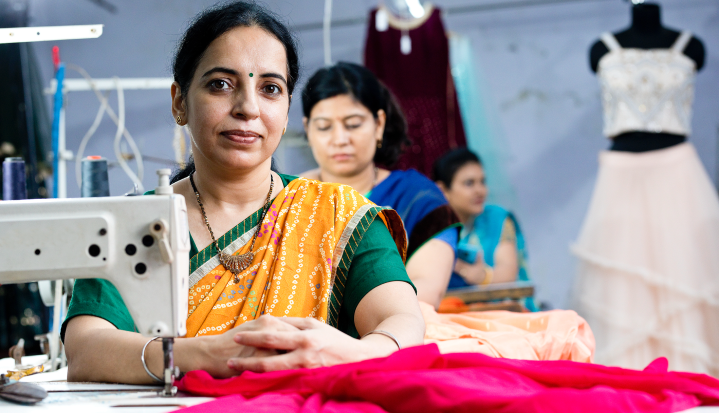The case for the climate responding employee insurance.
The climate is increasingly difficult for workers in global clothing supply chains from heat waves, heat waves, global clothing supply chains. Among many answers are the concept of ‘a work insurance that responds to the climate’ among fashion brands. While strengthening the government’s social security schemes, a special insurance program developed by fashion brands and suppliers, OTROOTS can play an important role in the protection of employees with the support of employee organizations and play an important role in the development of a fair passage.
Don’t mistake: Climate change is a human disaster now showing its face. Rising temperatures, strengthening rainfall, and a long drought creates dangerous working conditions, and the clothing workers are already wages, especially extreme air, especially with serious delivery schedules and inadequate infrastructure. Women – who makes up From 60% to 80% of clothing workforce Often from marginalized communities – especially sensitive. These crises increase the threats to deepen health, livelihood and well-being, gender difference.
In addition to human payment, the climate is extremely posing Business risksWith the closure of air-related factory, it is significantly violating its productivity and transactions. This call requires innovative, working-based solutions that combine immediate protection with long-term protection strategies along the supply strategies along the supply chains.
Climate response insurance for Daikil
Working well-being, income security and addresses offer a solution that promises confident risks, which combines climate risks. Proven systems such as India Staff State Insurance Scheme (ESIS) Emphasizing the efficiency of expenditures between employees, employers and governments in providing critical safety networks. Similarly, Sewa’s pilot extreme heat wave insurance Valuable concepts in India); This parametric model is compensated for income that gives incomes immediately to the incomes, for incomes lost during excessive summer heat. This approach may be adapted to address other climate risks such as floods or drought parametric insurance Excessive rain or water failure can trigger payments when the pre-determined limits exceeded.
Outside of basic health: a thorough frame
Such an insurance plan must apply to a wider range of climate effects. The main features may include:
- Climate-owned health coverage: Treatment of diseases caused by heat, flood or water shortages, heat stroke, water budgets and dehydration.
- Preventive Health Services: Health demonstrations and protective equipment, among other important measures.
- Livelihood protection: Compensation for lost wages when extreme air factory transactions or transport networks.
- Reproductive and mental health support: Suitable services for women who pay attention to the spiritual health effects of reproductive health problems and repetitive climate shocks.
It is convenient to insure: a common responsibility
To ensure the convenience, the industry can distribute costs between a large-risk model fashion brands, suppliers and employees:
- Fashion brands: Given the role of financial capabilities and centers in the supply chains, brands are the largest share of the more and the largest share of the obligations.
- Suppliers: The contributions of suppliers should reflect their narrow profit.
- Employees: The workers would contribute to the lowest share of low salaries in some areas stagnancy It has been for years.
Among the partners, Hovul reserves minimize administrative costs, shared the best practices and ensures a unit. Although this requires pre-investment, long-term advantages – supply chain sustainability and human rights (HRDD) frameworks (HRDD).
To ensure accessibility
For work for insurance, all employees must be accessible. Simplificent processes are important to provide multilingual support and access to both the state and private health facilities of employees. Workers should ensure that organizations should play an active role in design and control, including trade unions, and provide the system’s promises.
An approach can be integrated into existing national health systems, employers, including brands, including brands, including additional additions to vocational risks associated with various climate limits.
Call of action
With 2025 OECD Forum Clothing and Shoe Sector Required Research We need to bring together this opportunity to bring together various sounds together and make sense in the global clothing supply chains of climate transition plans.
Climate strategies of fashion brands cannot stand in carbon offset or abstract goals; Global must centralize people who are the most sensitive to crisis workers in the south. Because trade unions have long been a lawyer, the residential salary represents the strengthening of resilience to climate crises, strengthening employees, strengthening employees. If living salaries remain a problem to get a short time, the brands must start with measures that can act as a work insurance program that responds to the climate. Well-designed pilots can test this approach, potentially enhance, develop gender capital and ensure financial security for employees during climate breaches.
Josevine, who is a young clothing worker from Tamil Naduda, “We have left the Covid-19 crisis, and even the finished orders to get a fee for hunger and debt. We wanted to be luxury – we wanted to be luxury. Fair salary when disasters hit , safe conditions and protection. That’s what we asked. “
Now the fashion industry stops in the main time to correct past failures and demonstrate true leadership and not only about the planet, but also people who are not only on planets.
This article is a multilateral initiative dedicated to the health and welfare of women employees in global supply chains, which is part of the United Nations accountability platform, which is part of the United Nations Foundation and David WoCford. Bhise, the mandifa, also contributed to the article with the Indian Family Planning Union. All the ideas he endured are authors and does not necessarily represent the organizations they work.

